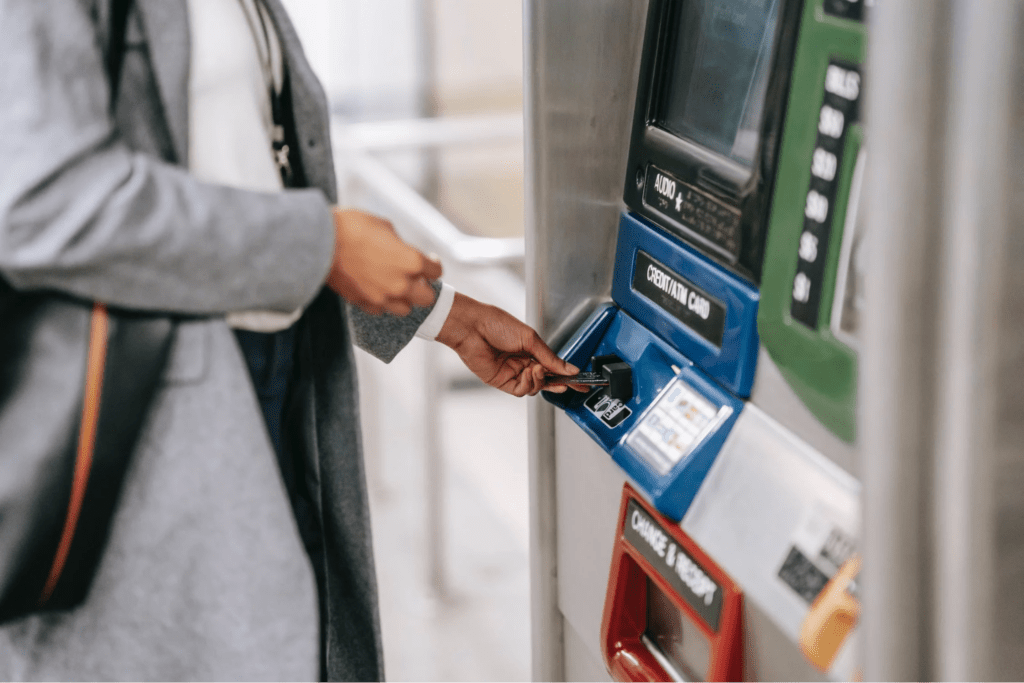Start Building Your Child’s Credit
Most children don’t concern themselves with financial matters because their parents handle them until their late teens. If this is the case with you and your child, opening a bank account for them is an excellent way to increase their financial awareness.
Unlike adults, minors can’t walk into a bank and request an account—at least not independently. In this guide, you’ll learn how to open a bank account for a minor and introduce your child to financial management.
Can Minors Open Bank Accounts?
There’s no federal law preventing a minor from having a bank account in their name. Still, state laws and most banks’ policies typically require an adult’s involvement.
Regardless of the minor’s age, their parent or legal guardian will most likely be the account co-owner, as minors aren’t legally able to enter into contracts, and a bank account agreement is a legal contract. Even if you believe this isn’t the case with your child, having control over their account is a good idea.
So yes—minors can have bank accounts, but parents need to open one with them. The process is quite straightforward, though the decision itself involves some careful thinking.
How To Open a Bank Account for a Minor Child
Opening a bank account is a significant milestone for your child, and there are numerous factors to consider before taking a trip to the bank. Follow these steps to start your child’s financial journey the right way:
- Choose the account type
- Determine the best time to open the account
- Explore the available options
- Gather the necessary documents
- Complete the application process
- Educate your child on using the account
Types of Bank Accounts You Can Open for Your Child

Source: maitree rimthong
Depending on your goals and your child’s eligibility, you can open two types of accounts for them:
- Checking account
- Savings account
Checking accounts are typically reserved for children ages 13 and over, but some banks have a different threshold. Regardless of your child’s age, the account will have joint ownership until they become legal adults. This means both you and the child can deposit and withdraw funds without restrictions.
Your child might also get a debit card connected to the account, which can be an excellent step toward financial independence. If this is your main goal, but you’re worried about your child overspending, you can get a prepaid card instead.
Unlike standard debit cards, prepaid options are not connected to a bank account. You can load the card with a specific amount of money to ensure your child stays within reasonable limits. Most cards also let you set parental controls and don’t come with age requirements, so they might be a better option than a standard checking account.
If your child is still young, and you want to save for their future without giving them immediate access to funds, you can open a savings account in their name. There are several types to choose from, most notably:
- Custodial accounts
- Joint savings accounts
- Education accounts
These accounts typically restrict a minor’s access to funds, letting you save without risks. Some may even earn interest or generate an income, so they’re a good way to grow your child’s wealth and prepare them for adulthood.
When Can You Open a Bank Account for Your Child?
Checking accounts have specific age restrictions, so you should explore different options to find the one your child is eligible for. When you do, consider how your child can benefit from an account and whether they are mature enough to handle it. While the average age for opening a checking account is 17, you can do it sooner if your child is ready.
Some tell-tale signs your child should have a checking account include the following:
- They got a job and want to use the account for paychecks
- They’ve shown interest in financial management and saving
- They’re traveling abroad or moving away
Savings accounts typically don’t have age restrictions, as children don’t have access to the funds before becoming legal adults. To maximize the account’s value, you should open it as soon as possible.
This is particularly true for custodial accounts, which can hold various assets besides money. You can invest in your child’s financial security early on to make their adulthood easier.
How To Choose the Best Account for Your Child

Source: Ono Kosuki
Most checking accounts work similarly, so you might think there’s not much difference between them. This is a common misconception, and scratching beneath the surface will uncover several important factors you should consider:
| Factor | What To Look For |
| Fees | Many accounts require monthly maintenance fees and other expenses that are avoidable with some research. Children’s bank accounts can sometimes even be free, so be diligent in finding the best option |
| ATM networks | Your child’s bank should have a large ATM network to ensure withdrawals are free of charge |
| App compatibility | You should choose a bank that supports digital wallets (e.g., Apple Pay or Google Pay) and peer-to-peer apps like Venmo, as such systems are ubiquitous among children and young adults |
Choosing a savings account might be more challenging because there are various factors to consider:
- Your goals—If you’re looking to build a safety net for your child, you can choose between a standard savings account and investment accounts like UTMA or UGMA. If you only want to save for college, specific education accounts might be a better option
- Insurance—Your account should be insured by the Federal Deposit Insurance Corporation (FDIC) to ensure the funds are protected in case of the bank’s failure. While most financial institutions are covered by FDIC, double-check to make sure you don’t commit to an uninsured option
- Earning options—Savings accounts can generate income through interest or investments. Consider your financial situation and saving goals to choose the most suitable account
What Documents Are Required To Open a Minor’s Bank Account?
Regardless of the account type you want to open, documentation typically boils down to proof of identity. Besides your child’s information, you’ll need to provide your own because you’ll co-own the account.
The required documentation includes the following:
- Government-issued ID or passport
- Social Security number (SSN)
- Proof of residence
- The child’s birth certificate
Note that the specific documentation can vary between banks, and some accounts might call for additional information. For instance, education accounts might require your child’s student ID or a similar document.
Banks usually request hard copies of the necessary documents, but some allow you to send them via email. Contact your bank before starting the application process to get the most accurate instructions.
What To Expect From the Application Process

Source: RDNE Stock project
Applying for a checking account is quick and straightforward. When you’ve chosen the bank, contact its representatives to schedule a meeting. While some banks let you fill out the application online, doing it in person is more common for accounts jointly owned with minors.
Make sure to take your child with you to the meeting, as both of you will likely need to sign the relevant documents. Don’t forget to bring the aforementioned documentation to avoid complications and delays.
Opening a savings account is relatively simple as well. The exact process might depend on the account type, but it most likely won’t require more than a single trip to the bank.
Proper Financial Education Is Key
A bank account is an excellent way to give your child hands-on experience with the banking system and financial management. As mentioned before, your child will likely get a debit card connected to it, so make sure to teach them about all the important aspects of using it.
The main points you should cover are:
- ATMs (emphasize the importance of withdrawing within the ATM network)
- Fees
- Transfers (through the bank’s app and third-party services)
Educating your child on a savings account is slightly more challenging, as you might need to dive into topics like investment and compound interest. The good news is that you’ll have enough time to teach your child everything they should know before they can make any executive decisions. They won’t assume responsibility for the account at least until they reach legal age, so you can cover all important matters in due time.
Starting a Bank Account for a Child—Effect on Credit
One aspect of personal finance isn’t encompassed by checking and savings accounts—credit building. No activity related to these accounts is reported to the credit bureaus, so you might want to consider opening a credit account for your child when the time comes. The sooner you do it, the more time you’ll have to help your child maximize their credit score.
The problem is, minors’ options are quite limited because they’re not allowed to have credit in their own name. Obtaining credit can be a challenge even after becoming legal adults due to the restrictions imposed by the CARD Act of 2009. According to the Act, young adults under 21 are required to meet one of the following conditions to be issued a credit card:
- Demonstrate an ability to make independent payments (e.g., by having a stable job with regular income showing up on the bank statement)
- Have a co-signer over 21 who can assume responsibility for the account
While your child is a minor, authorizing them to use your credit card is the only way to give them access to borrowed funds. Doing so would create a credit profile for your child, and they would inherit your credit history. This seems like a good idea at first glance, but it can be quite risky.
The Dangers of Adding a Child to Your Credit Card as an Authorized User
When your child becomes an authorized user of your credit card, everything they do with it shows up on your credit report and vice versa. Poor spending behavior can damage both credit profiles, so giving your child access to a card might not be a smart move unless you’re confident in their responsibility.
Besides, authorized users don’t build credit independently—they piggyback on the account holder’s. When you remove your child from the card, all associated credit activity is deleted from their profile. They will be back to square one and have to find another way to build credit.
With this in mind, adding a child to your card as an authorized user isn’t a particularly effective way to help them build a strong credit profile. If you need a more convenient method that doesn’t carry the aforementioned (or other) risks, FreeKick is an excellent option.
Use FreeKick To Build Your Child’s Credit and Protect Their Identity
With so many restrictions on minors obtaining credit cards, a service like FreeKick that provides credit building features is the workaround you need. Offered by Austin Capital Bank, FreeKick is an FDIC-insured deposit account that helps you build credit for your child while also protecting the identities of your whole family.
Three Steps for Using FreeKick’s Credit Building Service
FreeKick’s credit building service is available for children aged 13 to 25. Take the following three simple steps to help your child establish a credit history early on in life:
- Create an Account—Go to FreeKick.bank, sign up for an account, and choose a deposit that suits your budget
- Set It and Forget It—FreeKick will start building 12 months’ worth of credit history for your child
- Keep Growing—After 12 months, you can either close the account without any fees or choose to continue building credit for your child for another year
This service gives your child a credit head start of up to five years when they turn 18, which will help them save $200,000 during their lifetime through favorable loan terms and other financial perks.
How FreeKick Protects Your Child’s Identity
Child identity theft happens every 30 seconds, and without a secure identity, your child’s credit profile will be standing on a shaky foundation. This is why it’s important to invest in identity protection when you’re trying to give your children a bright financial future. FreeKick’s identity protection services include:
| Services for Minors | Services for Adult Children and Parents |
| Credit profile monitoring Social Security number (SSN) monitoring Dark web monitoring for children’s personal information Up to $1 million identity theft insurance Full-service white-glove concierge credit restoration Sex offender monitoring—based on sponsor parent’s address | Credit profile monitoring SSN monitoring Dark web monitoring for personal information Up to $1 million identity theft insurance Full-service white-glove concierge credit restoration Lost wallet protection Court records monitoring Change of address monitoring Non-credit (Payday) loan monitoring Free FICO® Score monthly FICO® Score factors Experian credit report monthly |
What FreeKick Costs
FreeKick offers two pricing plans:
| FDIC-Insured Deposit | Annual Fee |
| $3,000 | $0 (Free) |
| No deposit | $149 |
With both plans, you get:
- Credit building for six children aged 13 to 25
- Identity protection for two parents and six children aged 0 to 25
Say goodbye to credit card hassle and help your child establish a good credit profile—sign up for FreeKick today.
Featured image source: Alexander Suhorucov

Freekick provides a double dose of financial empowerment and security for your whole family. It helps teens and young adults build strong credit profiles and offers identity motoring for up to two adult parents and six children under 25.





